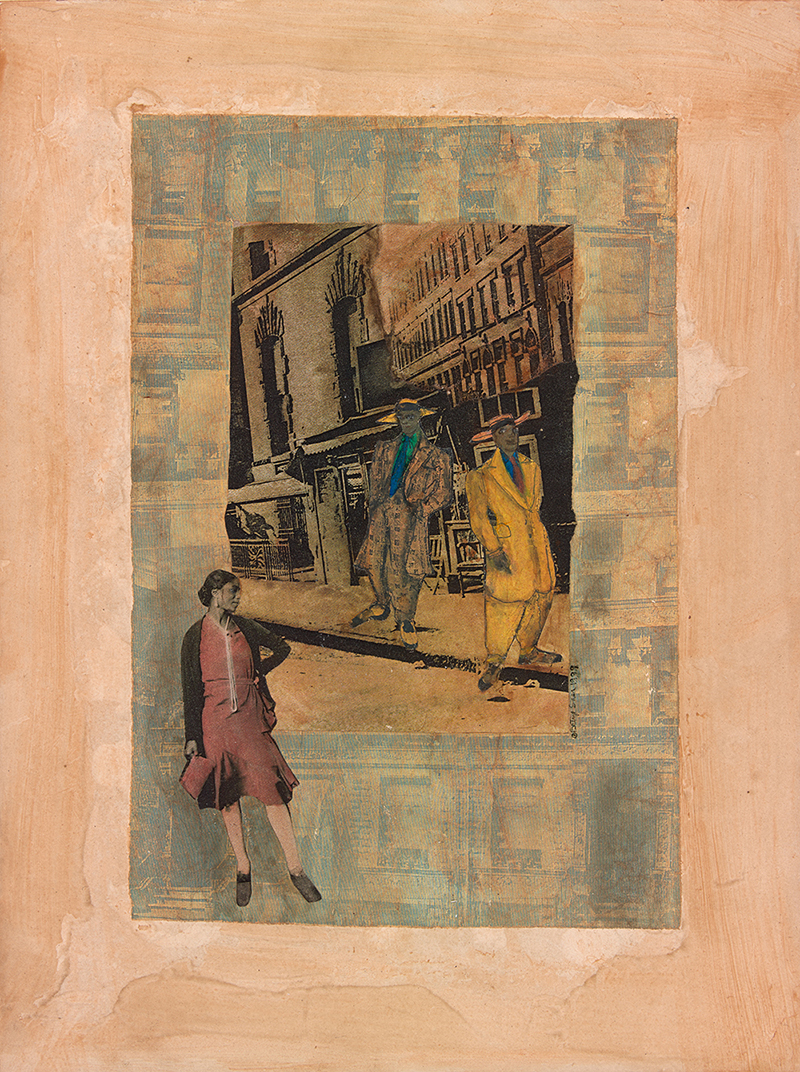Object of the Month: Betye Saar’s "Now You Cookin’ With Gas"
By Bowdoin College Museum of Art
Now You Cookin’ with Gas, 1999, mixed media collage by Betye Saar. Museum Purchase, with funds donated in memory of Shelendra V. Wilson, with assistance from the Barbara Cooney Porter Fund. Bowdoin College Museum of Art.
I will examine artist Betye Saar and her mixed media collage Now You Cookin’ With Gas, featured in the exhibition There Is a Woman in Every Color: Black Women in Art. Saar is an American artist known for her work in the medium of assemblage. She is a storyteller, crafting visual biographies with found objects to recollect narratives of identity, history, and memory. Now You Cookin’ With Gas is a part of series of six silk-screened collages that relate to author, anthropologist, and filmmaker Zora Neale Hurston’s short stories. Saar threads together her artistic vision and Hurston’s words to create a visual language that seeks to tell of both feminine and racial realities.
Now You Cookin' With Gas is the last story in Hurston's and Saar's book, Bookmarks in the Pages of Life: A Selection of Short Stories. Hurston's original, unedited short story appeared as the "Story in Harlem Slang" which was published in The American Mercury (1942). Saar portrays a woman, her hand propped up on her jived hip and her profile turned in a slight direction toward two men. Together they see a girl, stating "this one looked prosperous." The two men speak loud enough for her to hear down the avenue, and as she halts and braces her hips with her hands—as Saar has illustrated—she says, "A Zigaboo down in Georgey where I come from asked a woman that one time and the judge told him 'ninety days.'" The men continue their degrading talk, claiming she's good for the money, but the girl simply laughs and snorts, "Nobody ain't pimping on me. You dig me." Her laughter heightens, her tone of amusement growing harsher and harsher as the men make a greater mockery of themselves. She retorts back at them, threatening their advances, "touch me and I'll holler like a pretty white woman!" She is the one who walks away. She leaves the men to squander in their foolish swag.
Responding to Hurston, Saar depicts the prosperous woman on the edge of the imagined Harlem sidewalk. She is physically independent of the men who look upon her. She is self-possessed, unaffected by their glares of desire. The identity of the woman is at the center of the artwork. Saar creates a space that grounds itself in familiar aesthetics while also pushing its audience into an imaginative space in which implicit tensions can be further seen and discussed. Driven by the need to communicate knowledge through the intimacy of experience, she created artworks that directly engaged her audiences. it is through Saar's art that one finds the ability to assert oneself beyond bias. She understood how to be a woman, how to be Black, and how to be an artist all separate from one another. Saar then wove these identities together in order to reimagine stereotypes, and to break assumptions-such as the meanings of "women" and "black." Now You Cookin' With Gas exposes the racial and feminine implications of imagery to present a subversive tale.
Student Assistant to the Curator, spring semester 2021